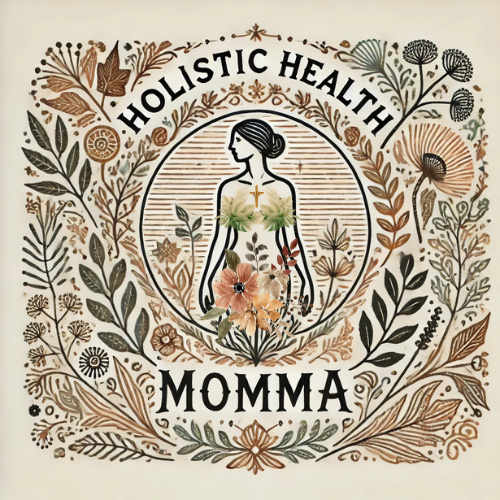Why Your Clothing Choices Matter (More Than You Think)
We’ve become well-versed in choosing the right foods, the right skincare, the right supplements—but how often do we stop to think about what we’re wearing next to our skin all day? What your clothes are made of and how they’re treated can have real implications for your health. Let’s dig into this together.
The Problem with Synthetic Fabrics
When I say “synthetic fabrics,” I’m talking about materials like polyester, nylon, spandex (also called elastane or Lycra), acrylic and similar petroleum-derived textiles. At first glance many of these perform beautifully (stretch, durability, affordability) but here are some of the downsides.
1. Chemical treatments and additives
Synthetic fabrics often require intense chemical processing and finishing. For example:
Additives like flame retardants, stain-resistants, anti-wrinkle treatments, water-repellent coatings (often PFAS) are used on fabrics. The Commons+3sustainfashion.info+3The Guardian+3
Some studies show that when we sweat in those fabrics, the sweat helps draw out chemical additives from microplastic fibers and they become available for skin absorption. The Guardian+1
Some dyes, heavy metals or finishing agents pose risks of skin irritation, allergic reaction, sensitization, even potential longer-term consequences. Alzheimer's Drug Discovery Foundation+1
2. Microfibres, microplastics & skin / body exposure
Synthetic garments shed tiny fibers (microfibres) when washed, worn, or even just through friction. Plastic Soup Foundation
These fibres and the chemicals associated with them may act as carriers for other toxins and might contribute to inflammation, irritation or unknown longer-term health risks. Plastic Soup Foundation+1
A recent documentary-style report states that synthetic fibers “dislodged from clothing are a major cause of acute or chronic inflammation.” Plastic Soup Foundation
3. Heat, friction, moisture & our skin environment
Our skin is our largest organ and is in direct contact with fabrics. When a fabric traps heat or moisture (as many synthetics can) or creates friction in high-motion zones, that environment can increase the chance of irritation or create a pathway for chemicals to enter. Combined with the points above, the risk is higher in sensitive populations (e.g., children, people with eczema or allergies). Arms of Andes
4. Long-term unknowns & cumulative exposure
While there’s still a lot we don’t know about the full health implications of wearing synthetic fibers, the evidence is growing that condition matters. For example, studies link synthetic-fabric exposure to hormonal disruption, neurological issues, thyroid concerns and more (though it’s important to say these are associations, not definitive causation). The Commons
What Fabrics Should You Choose First?
If you’re looking to lower your chemical and synthetic-fiber load, here are fabrics I recommend you prioritize:
• Organic cotton
Cotton is a classic for a reason: breathable, soft, skin-friendly. When it’s organic, you’re skipping many of the heavy pesticides and processing chemicals. It’s a great first choice for everyday clothing (tees, underwear, layering).
Tip: Look for certifications (GOTS, OEKO-Tex Standard 100) if you can.
• Wool (especially natural, untreated)
Natural wool (sheep’s wool, merino) is temperature-regulating, breathable, and durable. If you’re choosing wool, look for minimally processed, no heavy chemical coatings. Great for cooler-weather clothing, sweaters, layers.
• Linen or hemp
Linen (from flax) and hemp are natural-fiber alternatives that are breathable, strong and often less chemically treated. They may be slightly more high-maintenance (wrinkles, texture) but the health benefit is worth it if you’re seeking cleaner-textile options.
• Bamboo viscose / Lyocell / Tencel … with caution
These are interesting “semi-natural” fibers derived from wood pulp. While they can be better than many synthetics, they can still be chemically processed (depending on the brand) so check their manufacturing path. They’re good alternatives if sourced well.
• Minimal synthetic stretch in performance wear
Yes, I get it—sometimes you want the stretch of spandex or the moisture-wicking of synthetic blends (yoga, workout gear). In those cases:
Choose brands that clearly state low chemical finishing, or that use recycled synthetic fibers responsibly.
Consider rotating the use (so your skin isn’t constantly in contact), wash gently, and give preference to natural-blend performance garments when possible.
How to Shop & Care For Your Clothes with Health in Mind
Here are practical steps you can take now:
Read the label. If it says “100% polyester” or “nylon/spandex blend,” know what you’re getting.
Check for certifications like GOTS (Global Organic Textile Standard), OEKO-Tex, etc.
Buy fewer, better-quality items. Natural fabrics may cost a bit more but will last longer and be gentler on your body.
Wash new clothes before you wear them. This can remove excess dyes/finishes that were applied during manufacturing.
Avoid synthetic fabrics in high-sweat zones (unless they’re performance-rated and you know the brand) if you have skin sensitivity.
Prioritize comfort and fit—tight synthetic garments may increase friction, heat and moisture buildup.
Rotate your wardrobe—let garments air out, and avoid wearing the same piece day after day, especially if it’s synthetic.
Why This Truly Aligns with Holistic Health
Caring for your body means more than just eating well or exercising. It means creating a living environment—including what you wear—that supports your wellbeing. When you reduce unnecessary chemical exposure, minimize skin irritation, and choose fabrics that breathe, you’re investing in your health from the inside out.
Your clothing is one of the “daily exposures” your body experiences. So why not make those exposures as clean, supportive and health-promoting as your diet, your water or the air you breathe?
